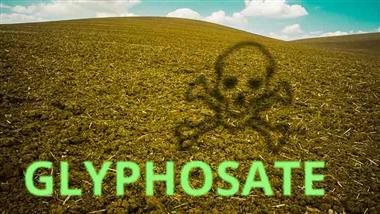by Dr. Joseph Mercola, Mercola:

STORY AT-A-GLANCE
- Gut microbiota composition was significantly impacted when mice were exposed to glyphosate at levels approximating the U.S. Acceptable Daily Intake of 1.75 mg/kg of body weight
- Proinflammatory T cells and Lipocalin-2, a marker of intestinal inflammation, increased after low-dose glyphosate exposure
TRUTH LIVES on at https://sgtreport.tv/
- Low-dose glyphosate exposure also reduced the abundance of beneficial bacteria, including Bifidobacterium pseudolongum and Lactobacillus sp in the gut
- Low levels of glyphosate also decreased microbial short-chain fatty acid (SCFA) biosynthesis pathways, an adverse effect, since SCFAs modulate gene expression, leading to increases in beneficial anti-inflammatory regulatory T cells
- You can reduce your exposure to glyphosate by eating organic foods; saturating your body with glycine may help provide some protection from glyphosate toxicity
About 8.6 billion kilograms of glyphosate, equivalent to about 18.9 billion pounds, have been applied to agricultural fields and other land worldwide since 1974. The majority — up to two-thirds — was used in the last decade.1
Glyphosate is a key ingredient in herbicides like Roundup, which in its earlier days was advertised as “biodegradable” and “environmentally friendly.” Monsanto even went so far as to claim it “left the soil clean” — until they were found guilty of false advertising because the chemical is actually dangerous to the environment.2
It’s toxic to humans, too, and is capable of altering gut microbiota, among other health risks. Perhaps most concerning of all, given that glyphosate has been widely detected in food and water, these changes occur even at low levels of exposure.
Low-Dose Exposure to Glyphosate Disrupts Gut Homeostasis
A team of University of Iowa researchers exposed mice to glyphosate at levels approximating the U.S. Acceptable Daily Intake of 1.75 mg/kg of body weight. When their fecal samples were analyzed, they found the exposure “significantly impacts gut microbiota composition,” including altering gut homeostasis. Proinflammatory T cells and Lipocalin-2, a marker of intestinal inflammation, increased after low-dose glyphosate exposure.3
Glyphosate kills plants by inhibiting the 5-enolpyruvylshikimate-3 phosphate synthase (EPSPS) enzyme. EPSPS is an enzymatic step in the shikimate pathway,4 which is involved in the synthesis of the essential aromatic amino acids phenylalanine, tyrosine and tryptophan.5
Since mammals do not have the shikimate pathway, it was suggested that glyphosate would not affect human health. However, some microorganisms do have the shikimate pathway, and it’s via this link that many of glyphosate’s adverse effects in humans may occur. According to the study:6
“Trillions of bacteria (gut microbiota) living in the human gut play a critical role in maintaining the healthy state of the human through the regulation of several host physiological processes, including the development and maintenance of the immune, endocrine, and nervous systems.
As bacteria utilize the shikimate pathway, glyphosate could alter gut microbiota composition by inhibiting gut bacteria harboring glyphosate sensitive EPSPS enzymes. Multiple in vitro studies have verified that many gut resident microbes are sensitive to glyphosate exposure.”
In addition to increasing fecal pH levels and proinflammatory markers, the study found low-dose glyphosate exposure reduced the abundance of beneficial bacteria, including Bifidobacterium pseudolongum and Lactobacillus sp. It also decreased microbial short-chain fatty acid (SCFA) biosynthesis pathways, an adverse effect, since SCFAs modulate gene expression, leading to increases in beneficial anti-inflammatory regulatory T cells.7
In short, the team explained, “We found that glyphosate exposure, at doses similar to the U.S. ADI, can alter gut microbiota composition and modulate the neuro-immune-endocrine system resulting in a proinflammatory environment.”8




